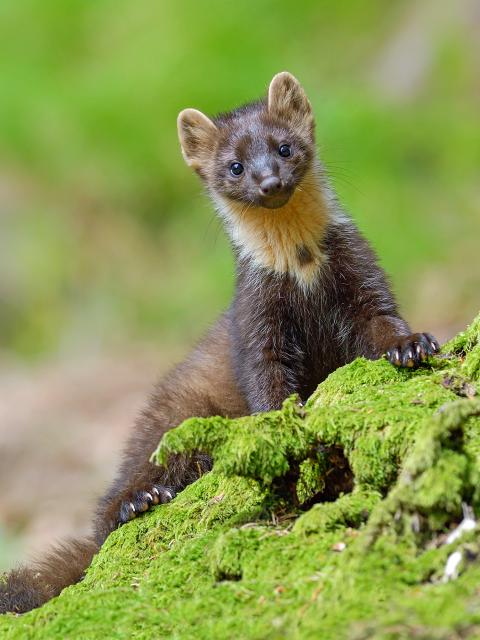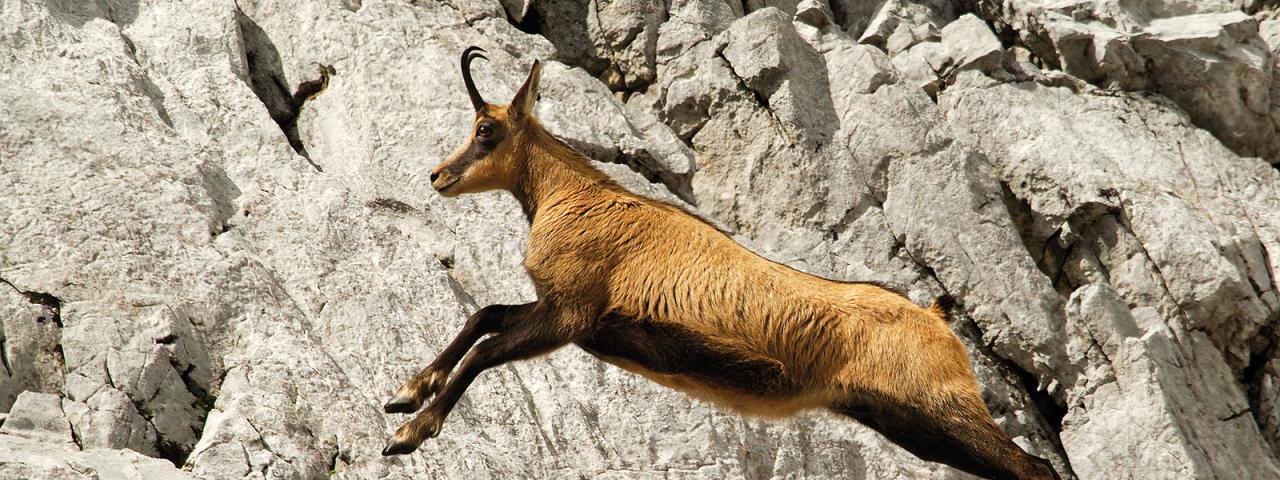Latin name: Rhinolophus hipposideros
Characteristics: With a weight of only four to ten grams and a wingspan of 25 cm, the lesser horseshoe bat is one of the smallest European bat species.
In the Northern Limestone Alps, the lesser horseshoe bat can be found as far west as Upper Austria. A population survey is planned in the National Park; two records have been confirmed for the Rettenbach Cave.
The animals hibernate from October/November to March/April, during which they wrap themselves completely in their wings. They almost exclusively use caves and tunnels as their winter quarters, while buildings - primarily attics - serve as their summer residence and for rearing their young.
Their prey consists mainly of small butterflies and mosquitoes. To forage, they need richly structured (deciduous) forests, forest edges and hedges that are located within a radius of two to three kilometers of their roosts and are connected to them by vegetation that provides cover. This is important as the bats orient themselves towards woody structures and avoid flying over open areas. The
populations in Europe have declined significantly. According to new findings from Switzerland, the decline is mainly due to the use of pesticides as well as changes in the landscape. The northern limit of the European distribution has shifted dramatically to the south since the 1950s. Thanks to its ability to cope with different temperatures, including low temperatures and high rainfall, the species has been able to retreat to higher altitudes. The distribution area extends from northwest Africa across Europe, Asia Minor, Central Asia to Kashmir and from western Arabia via Ethiopia to eastern Sudan. In Austria, it mainly colonizes higher basins and foothills, from where it penetrates deep into the Alps along the valleys.
Status, endangerment and protection
Status Kalkalpen National Park: not known in detail
Status Upper Austria (2005): not common
Red List Austria (2005): endangered
Endangered in Europe (2005): potentially endangered
Conservation responsibility for Austria: strongly responsible
Need for action for Austria: need for protection given
EU Habitats Directive: Annex II, IV
Upper Austria Nature Conservation Act: protected






